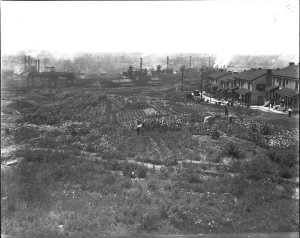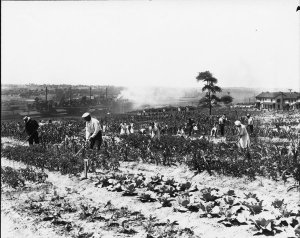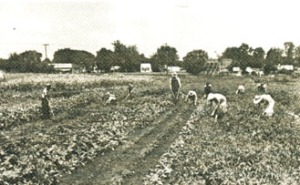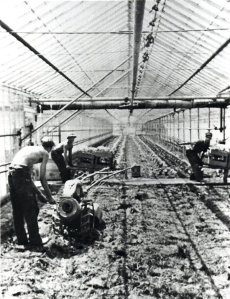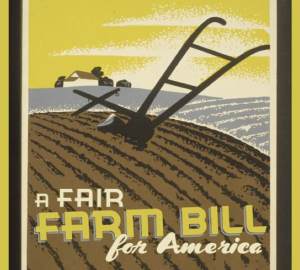Written for The Nation on May 15, 2008
by WALDEN BELLO
When tens of thousands of people staged demonstrations in Mexico last year to protest a 60 percent increase in the price of tortillas, many analysts pointed to biofuel as the culprit. Because of US government subsidies, American farmers were devoting more and more acreage to corn for ethanol than for food, which sparked a steep rise in corn prices. The diversion of corn from tortillas to biofuel was certainly one cause of skyrocketing prices, though speculation on biofuel demand by transnational middlemen may have played a bigger role. However, an intriguing question escaped many observers: how on earth did Mexicans, who live in the land where corn was domesticated, become dependent on US imports in the first place?
The Mexican food crisis cannot be fully understood without taking into account the fact that in the years preceding the tortilla crisis, the homeland of corn had been converted to a corn-importing economy by “free market” policies promoted by the International Monetary Fund (IMF), the World Bank and Washington. The process began with the early 1980s debt crisis. One of the two largest developing-country debtors, Mexico was forced to beg for money from the Bank and IMF to service its debt to international commercial banks. The quid pro quo for a multibillion-dollar bailout was what a member of the World Bank executive board described as “unprecedented thoroughgoing interventionism” designed to eliminate high tariffs, state regulations and government support institutions, which neoliberal doctrine identified as barriers to economic efficiency.
Interest payments rose from 19 percent of total government expenditures in 1982 to 57 percent in 1988, while capital expenditures dropped from an already low 19.3 percent to 4.4 percent. The contraction of government spending translated into the dismantling of state credit, government-subsidized agricultural inputs, price supports, state marketing boards and extension services. Unilateral liberalization of agricultural trade pushed by the IMF and World Bank also contributed to the destabilization of peasant producers.
This blow to peasant agriculture was followed by an even larger one in 1994, when the North American Free Trade Agreement went into effect. Although NAFTA had a fifteen-year phaseout of tariff protection for agricultural products, including corn, highly subsidized US corn quickly flooded in, reducing prices by half and plunging the corn sector into chronic crisis. Largely as a result of this agreement, Mexico’s status as a net food importer has now been firmly established.
With the shutting down of the state marketing agency for corn, distribution of US corn imports and Mexican grain has come to be monopolized by a few transnational traders, like US-owned Cargill and partly US-owned Maseca, operating on both sides of the border. This has given them tremendous power to speculate on trade trends, so that movements in biofuel demand can be manipulated and magnified many times over. At the same time, monopoly control of domestic trade has ensured that a rise in international corn prices does not translate into significantly higher prices paid to small producers.
It has become increasingly difficult for Mexican corn farmers to avoid the fate of many of their fellow corn cultivators and other smallholders in sectors such as rice, beef, poultry and pork, who have gone under because of the advantages conferred by NAFTA on subsidized US producers. According to a 2003 Carnegie Endowment report, imports of US agricultural products threw at least 1.3 million farmers out of work–many of whom have since found their way to the United States.
Prospects are not good, since the Mexican government continues to be controlled by neoliberals who are systematically dismantling the peasant support system, a key legacy of the Mexican Revolution. As Food First executive director Eric Holt-Giménez sees it, “It will take time and effort to recover smallholder capacity, and there does not appear to be any political will for this–to say nothing of the fact that NAFTA would have to be renegotiated.”
Creating a Rice Crisis in the Philippines
That the global food crisis stems mainly from free-market restructuring of agriculture is clearer in the case of rice. Unlike corn, less than 10 percent of world rice production is traded. Moreover, there has been no diversion of rice from food consumption to biofuels. Yet this year alone, prices nearly tripled, from $380 a ton in January to more than $1,000 in April. Undoubtedly the inflation stems partly from speculation by wholesaler cartels at a time of tightening supplies. However, as with Mexico and corn, the big puzzle is why a number of formerly self-sufficient rice-consuming countries have become severely dependent on imports.
The Philippines provides a grim example of how neoliberal economic restructuring transforms a country from a net food exporter to a net food importer. The Philippines is the world’s largest importer of rice. Manila’s desperate effort to secure supplies at any price has become front-page news, and pictures of soldiers providing security for rice distribution in poor communities have become emblematic of the global crisis.
The broad contours of the Philippines story are similar to those of Mexico. Dictator Ferdinand Marcos was guilty of many crimes and misdeeds, including failure to follow through on land reform, but one thing he cannot be accused of is starving the agricultural sector. To head off peasant discontent, the regime provided farmers with subsidized fertilizer and seeds, launched credit plans and built rural infrastructure. When Marcos fled the country in 1986, there were 900,000 metric tons of rice in government warehouses.
Paradoxically, the next few years under the new democratic dispensation saw the gutting of government investment capacity. As in Mexico the World Bank and IMF, working on behalf of international creditors, pressured the Corazon Aquino administration to make repayment of the $26 billion foreign debt a priority. Aquino acquiesced, though she was warned by the country’s top economists that the “search for a recovery program that is consistent with a debt repayment schedule determined by our creditors is a futile one.” Between 1986 and 1993 8 percent to 10 percent of GDP left the Philippines yearly in debt-service payments–roughly the same proportion as in Mexico. Interest payments as a percentage of expenditures rose from 7 percent in 1980 to 28 percent in 1994; capital expenditures plunged from 26 percent to 16 percent. In short, debt servicing became the national budgetary priority.
Spending on agriculture fell by more than half. The World Bank and its local acolytes were not worried, however, since one purpose of the belt-tightening was to get the private sector to energize the countryside. But agricultural capacity quickly eroded. Irrigation stagnated, and by the end of the 1990s only 17 percent of the Philippines’ road network was paved, compared with 82 percent in Thailand and 75 percent in Malaysia. Crop yields were generally anemic, with the average rice yield way below those in China, Vietnam and Thailand, where governments actively promoted rural production. The post-Marcos agrarian reform program shriveled, deprived of funding for support services, which had been the key to successful reforms in Taiwan and South Korea. As in Mexico Filipino peasants were confronted with full-scale retreat of the state as provider of comprehensive support–a role they had come to depend on.
And the cutback in agricultural programs was followed by trade liberalization, with the Philippines’ 1995 entry into the World Trade Organization having the same effect as Mexico’s joining NAFTA. WTO membership required the Philippines to eliminate quotas on all agricultural imports except rice and allow a certain amount of each commodity to enter at low tariff rates. While the country was allowed to maintain a quota on rice imports, it nevertheless had to admit the equivalent of 1 to 4 percent of domestic consumption over the next ten years. In fact, because of gravely weakened production resulting from lack of state support, the government imported much more than that to make up for shortfalls. The massive imports depressed the price of rice, discouraging farmers and keeping growth in production at a rate far below that of the country’s two top suppliers, Thailand and Vietnam.
The consequences of the Philippines’ joining the WTO barreled through the rest of its agriculture like a super-typhoon. Swamped by cheap corn imports–much of it subsidized US grain–farmers reduced land devoted to corn from 3.1 million hectares in 1993 to 2.5 million in 2000. Massive importation of chicken parts nearly killed that industry, while surges in imports destabilized the poultry, hog and vegetable industries.
During the 1994 campaign to ratify WTO membership, government economists, coached by their World Bank handlers, promised that losses in corn and other traditional crops would be more than compensated for by the new export industry of “high-value-added” crops like cut flowers, asparagus and broccoli. Little of this materialized. Nor did many of the 500,000 agricultural jobs that were supposed to be created yearly by the magic of the market; instead, agricultural employment dropped from 11.2 million in 1994 to 10.8 million in 2001.
The one-two punch of IMF-imposed adjustment and WTO-imposed trade liberalization swiftly transformed a largely self-sufficient agricultural economy into an import-dependent one as it steadily marginalized farmers. It was a wrenching process, the pain of which was captured by a Filipino government negotiator during a WTO session in Geneva. “Our small producers,” he said, “are being slaughtered by the gross unfairness of the international trading environment.”
The Great Transformation
The experience of Mexico and the Philippines was paralleled in one country after another subjected to the ministrations of the IMF and the WTO. A study of fourteen countries by the UN’s Food and Agricultural Organization found that the levels of food imports in 1995-98 exceeded those in 1990-94. This was not surprising, since one of the main goals of the WTO’s Agreement on Agriculture was to open up markets in developing countries so they could absorb surplus production in the North. As then-US Agriculture Secretary John Block put it in 1986, “The idea that developing countries should feed themselves is an anachronism from a bygone era. They could better ensure their food security by relying on US agricultural products, which are available in most cases at lower cost.”
What Block did not say was that the lower cost of US products stemmed from subsidies, which became more massive with each passing year despite the fact that the WTO was supposed to phase them out. From $367 billion in 1995, the total amount of agricultural subsidies provided by developed-country governments rose to $388 billion in 2004. Since the late 1990s subsidies have accounted for 40 percent of the value of agricultural production in the European Union and 25 percent in the United States.
The apostles of the free market and the defenders of dumping may seem to be at different ends of the spectrum, but the policies they advocate are bringing about the same result: a globalized capitalist industrial agriculture. Developing countries are being integrated into a system where export-oriented production of meat and grain is dominated by large industrial farms like those run by the Thai multinational CP and where technology is continually upgraded by advances in genetic engineering from firms like Monsanto. And the elimination of tariff and nontariff barriers is facilitating a global agricultural supermarket of elite and middle-class consumers serviced by grain-trading corporations like Cargill and Archer Daniels Midland and transnational food retailers like the British-owned Tesco and the French-owned Carrefour.
There is little room for the hundreds of millions of rural and urban poor in this integrated global market. They are confined to giant suburban favelas, where they contend with food prices that are often much higher than the supermarket prices, or to rural reservations, where they are trapped in marginal agricultural activities and increasingly vulnerable to hunger. Indeed, within the same country, famine in the marginalized sector sometimes coexists with prosperity in the globalized sector.
This is not simply the erosion of national food self-sufficiency or food security but what Africanist Deborah Bryceson of Oxford calls “de-peasantization”–the phasing out of a mode of production to make the countryside a more congenial site for intensive capital accumulation. This transformation is a traumatic one for hundreds of millions of people, since peasant production is not simply an economic activity. It is an ancient way of life, a culture, which is one reason displaced or marginalized peasants in India have taken to committing suicide. In the state of Andhra Pradesh, farmer suicides rose from 233 in 1998 to 2,600 in 2002; in Maharashtra, suicides more than tripled, from 1,083 in 1995 to 3,926 in 2005. One estimate is that some 150,000 Indian farmers have taken their lives. Collapse of prices from trade liberalization and loss of control over seeds to biotech firms is part of a comprehensive problem, says global justice activist Vandana Shiva: “Under globalization, the farmer is losing her/his social, cultural, economic identity as a producer. A farmer is now a ‘consumer’ of costly seeds and costly chemicals sold by powerful global corporations through powerful landlords and money lenders locally.”
African Agriculture: From Compliance to Defiance
De-peasantization is at an advanced state in Latin America and Asia. And if the World Bank has its way, Africa will travel in the same direction. As Bryceson and her colleagues correctly point out in a recent article, the World Development Report for 2008, which touches extensively on agriculture in Africa, is practically a blueprint for the transformation of the continent’s peasant-based agriculture into large-scale commercial farming. However, as in many other places today, the Bank’s wards are moving from sullen resentment to outright defiance.
At the time of decolonization, in the 1960s, Africa was actually a net food exporter. Today the continent imports 25 percent of its food; almost every country is a net importer. Hunger and famine have become recurrent phenomena, with the past three years alone seeing food emergencies break out in the Horn of Africa, the Sahel, and Southern and Central Africa.
Agriculture in Africa is in deep crisis, and the causes range from wars to bad governance, lack of agricultural technology and the spread of HIV/AIDS. However, as in Mexico and the Philippines, an important part of the explanation is the phasing out of government controls and support mechanisms under the IMF and World Bank structural adjustment programs imposed as the price for assistance in servicing external debt.
Structural adjustment brought about declining investment, increased unemployment, reduced social spending, reduced consumption and low output. Lifting price controls on fertilizers while simultaneously cutting back on agricultural credit systems simply led to reduced fertilizer use, lower yields and lower investment. Moreover, reality refused to conform to the doctrinal expectation that withdrawal of the state would pave the way for the market to dynamize agriculture. Instead, the private sector, which correctly saw reduced state expenditures as creating more risk, failed to step into the breach. In country after country, the departure of the state “crowded out” rather than “crowded in” private investment. Where private traders did replace the state, noted an Oxfam report, “they have sometimes done so on highly unfavorable terms for poor farmers,” leaving “farmers more food insecure, and governments reliant on unpredictable international aid flows.” The usually pro-private sector Economist agreed, admitting that “many of the private firms brought in to replace state researchers turned out to be rent-seeking monopolists.”
The support that African governments were allowed to muster was channeled by the World Bank toward export agriculture to generate foreign exchange, which states needed to service debt. But, as in Ethiopia during the 1980s famine, this led to the dedication of good land to export crops, with food crops forced into less suitable soil, thus exacerbating food insecurity. Moreover, the World Bank’s encouragement of several economies to focus on the same export crops often led to overproduction, triggering price collapses in international markets. For instance, the very success of Ghana’s expansion of cocoa production triggered a 48 percent drop in the international price between 1986 and 1989. In 2002-03 a collapse in coffee prices contributed to another food emergency in Ethiopia.
As in Mexico and the Philippines, structural adjustment in Africa was not simply about underinvestment but state divestment. But there was one major difference. In Africa the World Bank and IMF micromanaged, making decisions on how fast subsidies should be phased out, how many civil servants had to be fired and even, as in the case of Malawi, how much of the country’s grain reserve should be sold and to whom.
Compounding the negative impact of adjustment were unfair EU and US trade practices. Liberalization allowed subsidized EU beef to drive many West African and South African cattle raisers to ruin. With their subsidies legitimized by the WTO, US growers offloaded cotton on world markets at 20 percent to 55 percent of production cost, thereby bankrupting West and Central African farmers.
According to Oxfam, the number of sub-Saharan Africans living on less than a dollar a day almost doubled, to 313 million, between 1981 and 2001–46 percent of the whole continent. The role of structural adjustment in creating poverty was hard to deny. As the World Bank’s chief economist for Africa admitted, “We did not think that the human costs of these programs could be so great, and the economic gains would be so slow in coming.”
In 1999 the government of Malawi initiated a program to give each smallholder family a starter pack of free fertilizers and seeds. The result was a national surplus of corn. What came after is a story that should be enshrined as a classic case study of one of the greatest blunders of neoliberal economics. The World Bank and other aid donors forced the scaling down and eventual scrapping of the program, arguing that the subsidy distorted trade. Without the free packs, output plummeted. In the meantime, the IMF insisted that the government sell off a large portion of its grain reserves to enable the food reserve agency to settle its commercial debts. The government complied. When the food crisis turned into a famine in 2001-02, there were hardly any reserves left. About 1,500 people perished. The IMF was unrepentant; in fact, it suspended its disbursements on an adjustment program on the grounds that “the parastatal sector will continue to pose risks to the successful implementation of the 2002/03 budget. Government interventions in the food and other agricultural markets… [are] crowding out more productive spending.”
By the time an even worse food crisis developed in 2005, the government had had enough of World Bank/IMF stupidity. A new president reintroduced the fertilizer subsidy, enabling 2 million households to buy it at a third of the retail price and seeds at a discount. The result: bumper harvests for two years, a million-ton maize surplus and the country transformed into a supplier of corn to Southern Africa.
Malawi’s defiance of the World Bank would probably have been an act of heroic but futile resistance a decade ago. The environment is different today, since structural adjustment has been discredited throughout Africa. Even some donor governments and NGOs that used to subscribe to it have distanced themselves from the Bank. Perhaps the motivation is to prevent their influence in the continent from being further eroded by association with a failed approach and unpopular institutions when Chinese aid is emerging as an alternative to World Bank, IMF and Western government aid programs.
Food Sovereignty: An Alternative Paradigm?
It is not only defiance from governments like Malawi and dissent from their erstwhile allies that are undermining the IMF and the World Bank. Peasant organizations around the world have become increasingly militant in their resistance to the globalization of industrial agriculture. Indeed, it is because of pressure from farmers’ groups that the governments of the South have refused to grant wider access to their agricultural markets and demanded a massive slashing of US and EU agricultural subsidies, which brought the WTO’s Doha Round of negotiations to a standstill.
Farmers’ groups have networked internationally; one of the most dynamic to emerge is Via Campesina (Peasant’s Path). Via not only seeks to get “WTO out of agriculture” and opposes the paradigm of a globalized capitalist industrial agriculture; it also proposes an alternative–food sovereignty. Food sovereignty means, first of all, the right of a country to determine its production and consumption of food and the exemption of agriculture from global trade regimes like that of the WTO. It also means consolidation of a smallholder-centered agriculture via protection of the domestic market from low-priced imports; remunerative prices for farmers and fisherfolk; abolition of all direct and indirect export subsidies; and the phasing out of domestic subsidies that promote unsustainable agriculture. Via’s platform also calls for an end to the Trade Related Intellectual Property Rights regime, or TRIPs, which allows corporations to patent plant seeds; opposes agro-technology based on genetic engineering; and demands land reform. In contrast to an integrated global monoculture, Via offers the vision of an international agricultural economy composed of diverse national agricultural economies trading with one another but focused primarily on domestic production.
Once regarded as relics of the pre-industrial era, peasants are now leading the opposition to a capitalist industrial agriculture that would consign them to the dustbin of history. They have become what Karl Marx described as a politically conscious “class for itself,” contradicting his predictions about their demise. With the global food crisis, they are moving to center stage–and they have allies and supporters. For as peasants refuse to go gently into that good night and fight de-peasantization, developments in the twenty-first century are revealing the panacea of globalized capitalist industrial agriculture to be a nightmare. With environmental crises multiplying, the social dysfunctions of urban-industrial life piling up and industrialized agriculture creating greater food insecurity, the farmers’ movement increasingly has relevance not only to peasants but to everyone threatened by the catastrophic consequences of global capital’s vision for organizing production, community and life itself.
Other Nation articles on the subject…
-
REED LINDSAY: Protesters decry high food prices–and the savage cost of “free trade” agreements.
-
JOHN NICHOLS: We must rein in the global food giants who reap profits at the expense of the planet and the poor.
-
DAVID E. GUMPERT: As struggling dairy farmers seek profits by responding to rising consumer demand for raw milk, regulators are taking a hard line.
-
EMILY BIUSO: The history of banana cultivation is rife with labor and environmental abuse, corporate skulduggery and genetic experiments gone awry.
-
JOHN FEFFER: Chinese hearts, minds and pocketbooks get a lot of attention from the Eastern and Western consumer markets.





